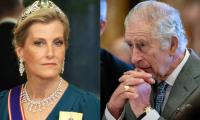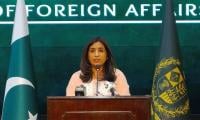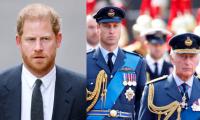‘I just want to make sure their church is burnt to the ground,’ said a middle-aged woman in Cinema Basti Jaranwala to a senior police officer just as the police were trying to stop the rampage on August 16, 2023.
These words have haunted me since I heard them the very next day of the attack. That this woman, who was a neighbour to many of the Christians in the area, could say this so coldly and emphatically, should send a chill down anyone’s spine who wants to see an inclusive Pakistan. This is the new Pakistan, a ‘Naya’ Pakistan we do not want to accept, but which is fast becoming a reality.
The instrumentalization of religion for political and social engineering purposes has been happening in South Asia for over a century now. While the province of Punjab was won over by the All India Muslim League purely on religious rhetoric in 1946, the founder of our country knew that continuing with religious idioms would only create divisions within society. Hence in his famous August 11, 1947 speech, the Quaid e Azam gave the blueprint for a country based on territorial citizenship: whoever was in Pakistan and wowed allegiance to it was an equal Pakistani, regardless of religious affiliation.
This stance made sense since on August 11, 1947 between a quarter and a third of Pakistan (both wings) would have been non-Muslim. The great exodus had yet to begin, and so Jinnah had to ensure that everyone living in Pakistan was promised full and equal citizenship at inception, so that he could lead a united country. Remember, his fear was that the Hindus would not give this equal citizenship in a united India, and hence could not have denied such rights to non-Muslims living in Pakistan. Unfortunately, the founder of Pakistan’s speech was misunderstood by even his close associates, and the Objectives Resolution of 1949 divided Pakistan into Muslims and non-Muslims. It is this division which is haunting Pakistan today and eating it up from within.
Christians in Pakistan have always been a small minority. In fact, even after most of the Hindus in Pakistan separated with the emergence of Bangladesh in 1971, Hindus are still the largest minority in Pakistan. However, Christians have had a strong imprint on both state and society. For generations, Christian educational institutions have taught and nurtured innumerable Pakistani leaders, civil servants, military officers and civil society luminaries. Similarly, scores of Christian hospitals have given the healing touch to millions, again mostly Muslims, across the country.
With such prominence and not being involved in the Hindu/Sikh vs Muslim struggle in British India, Christians in Pakistan thought that they would have a good deal. The fact that Christianity and Islam had shared religious elements made them even more confident that this new country would be better for them. No wonder then a few hundred Christian families moved to West Punjab in Pakistan from places like Amritsar, Gurdaspur and Ludhiana after Partition.
The Christian euphoria over Pakistan was, sadly, short lived. Even though its leaders supported Pakistan rather late in the day, they expected some consideration in the new dispensation. However, despite various efforts, no Christian could find a place in the inaugural Constituent Assembly of Pakistan, nor could Christian stalwart S P Singha reclaim the speakership (he was speaker of the united Punjab Assembly) once the West Punjab Assembly met in February 1948.
The throwing out of Christian agricultural workers by the incoming refugees in early 1948 was yet another blow to a community wishing to prosper in Pakistan. Seeing the writing on the wall, those Christians who could leave, left, and the 1950-70s saw a bulk of Christian upper and middle class leave the country.
Thus, what remained of the Christian community were the poor, uneducated and largely rural, who had to suffer not only religious but also caste discrimination as many hailed from the lowest rung of the social strata. These Christians then tried to re-invent themselves by doing more, so that they could be accepted as Pakistanis. Not only was a new, rather imagined, narrative created about Christian support for Pakistan, patriotism was instilled through schools, colleges, and even churches, where Independence Day became a big celebration. A recent study has in fact shown that Christian students are more patriotic than their Muslim counterparts, exhibiting how deeply love for Pakistan is held in the community.
But the result of all this patriotism is before us. Shantinagar in 1997, Gojra in 2009, Joseph Colony in 2013, and now Jaranwala. Together with several smaller incidents, being victims of arson and killing is now becoming the new badge of patriotism for Christians in Pakistan. Not only are they discriminated against at the state level, especially through education, socially too they are pariahs in most places. A cleric – who has still not been arrested – even thundered over how a Christian can be allowed to join the civil service in a Muslim country, a reference to the poor Christian assistant commissioner of Jaranwala who had to run for his life that fateful day.
As I left the charred Band Gali area of Cinema Basti in Jaranwala, I looked up and saw a flag of Pakistan fluttering over a burnt Christian house. The honour of Pakistan’s flag was intact, but what about the honour of its citizens?
The writer is a historian based in Lahore. He tweets/posts @BangashYK on X and can be contacted at: yaqoob.bangash@gmail.com
Many people believe that in future, AI will play an even more significant role in their lives
In April 2024, three Chinese and one Belarusian company were sanctioned for exporting missile-enabling technology to...
Pakistan has second highest neonatal mortality in world; in education sector, country's 26 million kids are out of...
Key actors in global power politics are US, China, Russia, European Union, and emerging powers such as India and Brazil
Maulana Fazl manages to bring together factions that historically stand opposed
NASA says August 2024 set new monthly temperature record, capping Earth’s hottest summer since 1880







